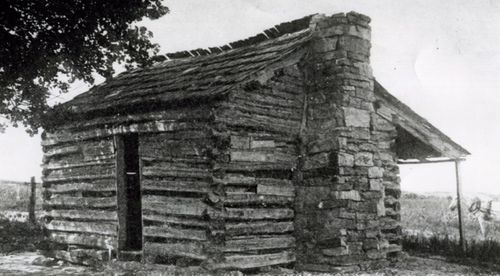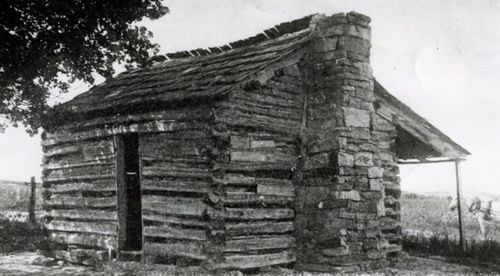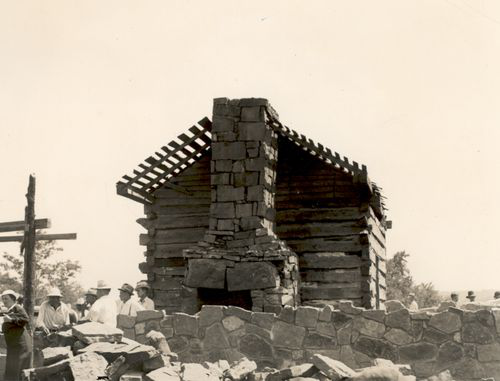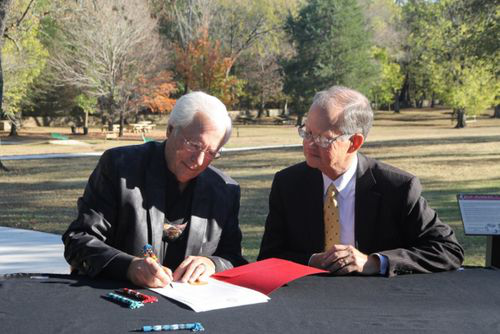
CABIN IN THE WOODS
Author: Krystan Moser
One of the most notable figures in Cherokee history is Sequoyah, the creator of the Cherokee syllabary. Sequoyah, or George Guess, was born around 1770 in what is now the state of Tennessee. Sequoyah spent more than a decade studying the structure of the Cherokee language, and in 1821 he unveiled a written version of the language.
Sequoyah’s cabin, one of only 22 designated National Historic Landmarks in the state of Oklahoma, is located northeast of Sallisaw in Sequoyah County. Sequoyah acquired the land on which he made his final home in 1828 and built a one-room log cabin on the site in 1829.

Sequoyah’s cabin, ca. 1912 (Muriel Wright Collection). Courtesy of the Oklahoma Historical Society
Around 1842, Sequoyah left home to search for a band of Cherokees who moved south in the early 19th century. Sequoyah died on this journey, and in 1855, his widow, Sallie Guess, sold the property (including the cabin and a pile of logs allegedly hewn by Sequoyah himself) to George and Nancy Blair. That same year George used the pile of logs left by Sequoyah to add on to the existing cabin. The Blairs were among the many Cherokees forcefully removed to Indian Territory during the Trail of Tears. Although George died in 1887, the Blair family remained in possession of the property until 1936. The Blair family cemetery lies near the cabin, and nearly 60 members of the Blair family rest there.
Notable Oklahoma historian Dr. Grant Foreman visited the site in 1930, photographing the cabin and securing a statement regarding its history from George Blair’s son, Thomas. Thomas Blair’s daughter, Pearl Blair Matheson, and her son and daughter-in-law, Thomas Blair and Sue Jane Matheson, deeded the property to the state of Oklahoma for use as a memorial on Feb. 27, 1936. Former Oklahoma Governor Robert L. Williams, attorney and legislator W.W. Hastings, and Foreman together formed the Sequoyah Memorial Committee.

Building a protective structure around the cabin, ca. 1936 (Oklahoma Historical Society Photograph Collection). Courtesy of the Oklahoma Historical Society
The cabin’s addition from 1855 was taken down, and work was done to restore parts of the cabin in need of repair. WPA workers were employed to build a protective structure around the cabin, the cornerstone of which was laid on June 12, 1936.
The site was designated a National Historic Landmark in 1965 and placed on the National Register of Historic Places in 1966.

Cherokee Nation Principal Chief Bill John Baker and Dr. Bob Blackburn, executive director of the Oklahoma Historical Society, sign the official certificate of transfer for Sequoyah’s Cabin near Sallisaw, Oklahoma, on Nov. 9, 2016
In 2016, the Cherokee Nation assumed ownership of the cabin due to state budget cuts, which drastically reduced the state’s appropriation to the Oklahoma Historical Society. The purchase was formalized on Nov. 9, 2016. Cherokee Nation Cultural Tourism developed new interpretive panels inside the memorial, and many artifacts remained on site due to a loan agreement with the Oklahoma Historical Society.
